
Soil Culture
We give their names and some of their synonyms, their adaptation to quince or pear stocks, their manner of growth, and time of maturity. These will enable the culturist to select whatever best suits his taste; adapted to quince or pear stocks; for the table or kitchen; for summer, fall, or winter use, and for home or the market.
Belle Lucrative.—Fondante d' Automne, Seigneur d' Esperin. Tree of moderate growth, but a great bearer. A fine variety, on quince or pear, better perhaps on the pear stock. Season, last of September.
Beurré Easter with fifteen synonyms that few would ever read. Best on quince. Requires a warm soil and considerable care in ripening, when it proves one of the best. Its season—from January to May—makes it very desirable. Large, yellowish-green, with russet spots.
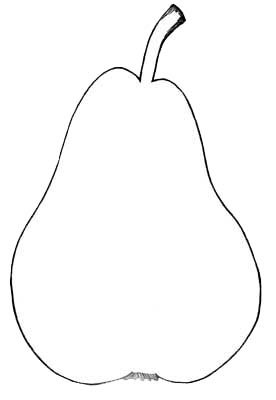
Bartlett.
Bartlett.—William's, William's Bon Chretien, Poire Guilliaume. Tree, a vigorous grower, and a regular, early, good bearer, of long, handsome, perfectly-formed fruit; on the quince or pear stock. Time, August and September.
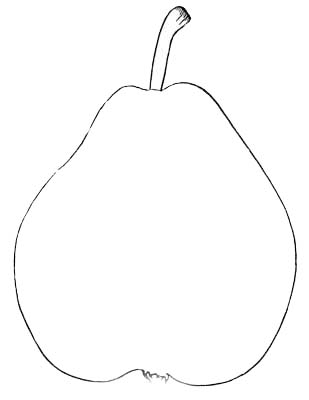
Beurré Diel.
Beurré Diel.—Diel, Diel's Butterbirne, Dorothee Royale, Grosse Dorothee, Beurré Royale, Des Trois Tours, De Melon, Melon de Kops, Beurré Magnifique, Beurré Incomparable. Grows well on quince or pear, but perhaps does best on quince. Large, beautiful, luscious fruit. Season, October to last of November.

White Doyenne.
White Doyenne.—Virgalieu. Tree vigorous and hardy on pear or quince. Everywhere esteemed as one of the very best. Needs care in supplying proper manure and clay on light soils, to prevent the fruit from cracking. September to November. If we could have but one we should choose this.
Columbia.—Columbian Virgalieu. Native of New York, bearing abundantly, a uniformly smooth, fair, large fruit. Color, fine golden yellow, dotted with gray. Season, December and January.

Flemish Beauty.
Flemish Beauty.—Belle de Flanders, &c. This is a large, beautiful, and delicious pear. One of the finest in its season, but does not last long. Ripens last of September. Very fine on the quince, and is excellent on the rich prairie-lands of the West. Deserves increased attention.
Beurré d'Aremberg.—Duc d'Aremberg, and eight other synonyms. Tree very hardy, does well on the pear stock, and bears early, annually, and abundantly. A very fine foreign variety. The fruit hangs on the tree well, and may be ripened at will from December to February, by placing in a warm room, when you would ripen them.
Buffum.—A native of Rhode Island, and very successful wherever grown. A great bearer of handsome fruit, though not of the best quality. It is, however, an excellent orchard pear. Fruit, medium size, ripening in September.
Louise Bonne of Jersey.—William the Fourth, and three other useless foreign synonyms. Not surpassed, on the quince. Tree very vigorous, producing a great abundance of large fruit. Season, October.
Madeleine.—Magdalen, Citron des Carmes. This bears an abundance of small but delicious fruit. Is valuable also on account of its season—the last half of July. Good on pear or quince. Must be checked in its growth, on very rich land, or it will be subject to the frozen sap-blight.
Onondaga.—American origin. Equally good on pear or quince. Large, hardy, and very productive tree. The fruit is very large, fine golden yellow when ripe. Excellent for market. Season, October and November.
Pound Pear.—Winter Belle, and twelve other synonyms, which are unimportant. This is the great winter-pear for cooking. The tree is a very vigorous grower and great bearer. A very profitable orchard variety. December to March.
Prince's St. Germain.—New St. Germain, Brown's St. Germain. Hardy and productive. Good keeper, ripening as easily and as well as an apple. December to March.
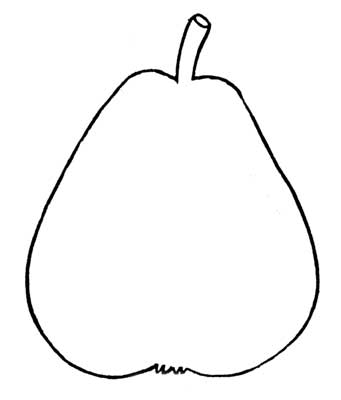
Seckel.
Seckel.—There are a number of synonyms, but it is always known by this name. Tree is small, but a good and regular bearer of small excellent fruit. Time in warm climates, September and October.
Steven's Genesee.—Stephen's Genesee, Guernsey. Desirable for all orchards and gardens, on quince or pear. Fine grower and very productive. Fruit large and excellent. Elliott says "even the wind-falls are very fine."
Vicar of Wakefield.—Eight synonyms, but it will hardly be mistaken by nursery-men. Does well on quince. It is thrifty and very productive of fruit of second quality. Yet it is generally profitable. November to January.
Winter Nellis.—Its six foreign synonyms are of no consequence. This is the best of all winter-pears, grown on quince or pear. Exceedingly well adapted to the rich western prairies. An early and great bearer. November to January 15.

Gray Doyenne.
Gray Doyenne.—A superior October pear. Tree hardy and productive on both pear or quince. Partakes much of the excellence of the White Doyenne.
From these you can select five or six just adapted to your wishes. The diversity of views, of the merits of different varieties of pears, arises mainly from the influence of location, soil, and culture. The established known varieties, may be grown in great perfection anywhere, with suitable care. At the West they must be root-pruned and headed-in until they are ten years old, after which they will be hardy and productive. If allowed to grow as fast as they will incline to, on alluvial soils, when they are exposed to severe winters, they will disappoint growers. With care they will be sure and profitable.
PEPPERS
The red peppers, cultivated in this country, are used for pickling, for pepper-sauce, as a condiment for food, and as a domestic medicine.
Varieties—are named principally from their shape. The large squash-pepper is best for green pickles, on account of its size and tenderness. The Cayenne, a small, long variety, much resembling the original from which it is named, is very pungent, used mostly for pepper-sauce. Grind, not very fine, any of the varieties, and they are useful on any food of a cold nature and not easily digestible. They are all good for medicinal purposes. The capsicum needs a dry, warm soil, with exposure to the sun. Plants should stand two feet apart each way; as they are slow growers, they should be started in an early hotbed. Many will ripen during summer, and may be gathered. In the fall, when frost comes, the vines will be covered with blossoms and with peppers of all sizes. Fall-grown green ones, strung on a thread, and hung in a warm, dry room, will ripen finely. They are very hardy, and may be transplanted without injury. Hen-manure is best for them.
PEPPERGRASS
This is a variety of cress, of quick growth, used as lettuce. On a rich, finely-pulverized soil, sow the seeds in drills, fifteen inches apart, and cover very lightly. Sow thick and water in dry weather. For use, cut the tops while they are very tender. A second crop will grow, but inferior to the first. The water-cress, growing spontaneously by rills and springs, is a kind of wild peppergrass, and is by some persons more esteemed than the garden variety. We prefer early lettuce to cresses or peppergrass, and see no reason for their cultivation, but their rapid growth.
PLOWING
This is one of the most important matters in soil-culture. When, how, and how much, shall we plow? are the three questions involving the whole. When should plowing be done? As it respects wet or dry, plow sandy or gravelly land whenever you are ready. It will neither be hard when dry, nor injured by being plowed when very wet. Good loams may be plowed at all times except when excessively wet. Clays can only be worked profitably when neither excessively wet or dry. Plowing land in a warm rain is almost equal to a coat of manure. Plowing in a light snow in the spring will injure it the whole season. We have noticed a marked difference in corn growing but a rod apart, on land where snow was plowed in, and the other plowed two or three days later, after the snow was gone; this difference was noticeable in the rows throughout the entire field. Spring or fall plowing is a question that has been much discussed. Sod-land is better plowed in the fall. The action of winter rains and frosts on the turf is beneficial. The same is true of land trenched deep, where much of the hard, poor subsoil is brought to the surface: it is benefited by winter exposure. Other cultivated fields are injured by fall-plowing, unless it be very early. All stubble-land is much benefited by being plowed as soon as the grain is taken off. The weeds and stubble, plowed under, will be decomposed by the warm weather and rains, and benefit the soil almost as much as an ordinary coat of manure. Plowed late, such action does not take place, and the surface is injured by winter-exposure: hence, do all the early fall-plowing possible, but plow nothing late in the fall but sod-land.
How shall we plow? All land should be subsoiled, except that having a light, porous subsoil; one deep plowing on such land is sufficient. Subsoiling is done by using two teams at once—one with a common plow, running deep, and the other with a subsoil-plow with no mould-board, and which will, consequently, stir and disintegrate the earth to the depth at which it runs, without throwing it to the surface. The next surface-furrow will cover up this loosened subsoil. In this way, land may be plowed eighteen inches deep, to the great benefit of any crop grown on it. If the surface be well manured, this method of plowing will place the manure between the first furrow and the subsoil, and increase its value. Such plowing is very valuable on land for young fruit-trees. There is another method, which we denominate double-plowing, which is more beneficial than ordinary subsoiling: it is performed by two common plows, one following in the furrow of the other; the first furrow need not be very deep—let the furrow in the bottom of the first be as deep as possible, and thrown out upon the surface; the next furrow will throw the surface and manure into the bottom of the deep furrow; the next furrow will cover this surface-soil and manure very deep, and, as manure always works up, it will impregnate the whole. This, for garden-vegetables, berries, nurseries, or young orchards, is the best form of plowing that we have ever tried. It may be done with one team, by simply changing the gauge of the clevis every time round, gauging it light for the first furrow, and deep for the second. We once prepared a plat in this way with one team, on which cabbages made a remarkable growth, even in a dry season. Still a farther improvement would be a light coat of fine manure on the surface. All furrows, in every description of plowing, should be near enough together to move the whole, leaving no hard places between them. The usual "cut and cover" system, to get over a large area in a day, is miserable economy. The more evenly and flatly land can be turned over in plowing, the better it will be; it retards the growth of weeds, and secures a better action upon substances plowed under. An exception to deep plowing is in breaking up the original prairies of the West: they have to be broken with plows kept sharp as a knife, and not more than two inches deep. The grass then dies and the sod rots. But plowed deep, the grass comes up through the turf, and will prove troublesome for two or three years. It must also be broken at a certain season of the year, to insure success. It may be profitably done for two months after the grass gets a good start in the spring.
How much is it best to plow land? Once double-plowed, or thoroughly subsoiled, and well turned over, is better than more. Land once plowed so as to disintegrate the whole to the depth of the furrow, will produce more, and require less care, than the same would do if cross-plowed once or twice. Excessive plowing is a positive injury. All land should be broken up once in three or four years, and not kept longer than that under the plow at one time. Some farmers keep land perpetually in grass, refusing to have a plow touch it on any condition. They see wrong tillage produce barrenness. But by this practice they are great losers; they never get over one half the hay or pasturage that could be obtained by frequent tillage and manuring, and a rotation of crops.
PLUM
This is one of our best fruits, but suffers more from enemies than any other.
Propagation is by seeds or layers, budding or grafting. Seeds from trees not exposed to mixture with other varieties in the blossom, will produce the same; hence, this is the best method of propagating a given variety, standing alone. But, for most situations, budding is preferable to any other method. This should be performed earlier than on the peach. The plum matures earlier, and hence should be budded about the last of July, or first of August. Bud on the north side of the tree to avoid the hot sun; and tie more tightly than in budding other trees. Bud plum-trees the second year from the seed. Grafting should be resorted to only when buds have failed, and there is a prospect that the trees will be too large for budding another season. The common wild plums make good stocks, if grafted at the ground. Thoroughly mulch all newly-grafted plum-trees. Root-grafting will succeed, but should never be practised. In all grafting of plums, put the graft in at the surface of the ground, and cover with sawdust or mould, leaving but one bud on the graft exposed.
Soil.—All soils are good for the plum, provided they be thoroughly drained, and properly fertilized.
Hard soils are recommended as being almost proof against the curculio. That a soil affording a rather hard, smooth surface, will afford less burrows for curculio, and consequently lessen their ravages, is no doubt true. But it is not a perfect remedy, and, on other accounts, such a soil is no better. A good firm loam is best. Plums will do well also on light land, but are more exposed to injury from the curculio.
Transplanting.—The plum being perfectly hardy, we recommend transplanting in autumn. Shorten in the top, cut off considerable of the tap-root, and the ends of the long roots, transplant well, and mulch so thoroughly as to prevent too strong action of the frost on the roots, and they will start early and do well. Twelve feet apart for small varieties, and twenty feet for larger growers, are the distances usually recommended. We think a rod apart each way will do well for all varieties.
Pruning.—Once started in a regular growth, in such a shape as you desire, no further pruning will be necessary but occasionally heading-in a too luxuriant shoot, and removing diseased and cross limbs. On rich Western lands, and in warm Southern climes, young plum-trees must be root-pruned and headed-in, or they will be unfruitful and unhealthy. Root-pruning should be done in August, in the following manner. In case of a tree ten feet high, take a sharp spade, and in a circle around the tree, two feet from the trunk (making the circle four feet in diameter), cut off all the roots within reach. In smaller trees, make the circle smaller, and in larger ones, larger. At the same time, shorten in the current year's growth, by cutting off one half the length of all the principal shoots; this will give vigor, symmetry, and fruitfulness, and prove a valuable preventive of disease. Plum-trees should always have good, clean cultivation.
Manures from the stable and slaughter-house, with wood-ashes, lime, and plenty of salt, are the best for the plum. The following analysis, by Richardson, of the fruit of the plum, will aid the culturist in his selection of manures:—

Hence, as wood-ashes contains much potash, and as this is the largest ingredient in the plum, it must be the best application to the soil for this fruit. Bones, dissolved in sulphuric acid, would also be very valuable. Bones, bonedust, salt, wood-ashes, and barnyard manure, with a little lime, will be all that will be necessary.
Diseases.—In most northern latitudes, the black wart, or knot, is fatal to many plum-trees. It is less prevalent at the South: its origin is not known. Many theories respecting it are put forth by different cultivators; they are unsatisfactory, and their enumeration here would be useless. It may be either the result of general ill health in the tree, from budding on suckers and unhealthy stocks, and a want of proper elements in the soil, or of improper circulation of sap, caused by the roots absorbing more than the leaves can digest. In the latter case, root-pruning and heading-in would be an effectual preventive. In the former, supply suitable manures, and give good cultivation. In every case, remove at once all affected parts, and wash the wounds and whole tree, and drench the soil under it, with copperas-water—one ounce of copperas to two gallons of water. This is stated to be a complete remedy.
Defoliation of seedlings and bearing trees often occurs in July and August. Land well supplied with the manures recommended, especially wood-ashes, salt, and the copperas-water, has not been known to produce trees that drop their leaves.
Decay of the Fruit is another serious evil. Professor Kirtland and others suppose it to be a species of fungus. Poverty of soil, and wet weather, may be the cause. If the season be unusually wet, thin the fruit, so that no two plums shall touch each other. Keep the soil properly manured, and spread charcoal or straw under the tree, and you will generally be able to preserve your fruit.
The Curculio is the great enemy of the plum, and frequently of all smooth-skinned fruits, as the grape, nectarine, &c.

(1) Curculio, in the beetle-form, life-size. (2) Its assumed form when disturbed or shaken from the tree.
(3) Larva, or worm, as found in the fallen fruit. (4) Pupa, or chrysalis state, in which it lives in the ground.
Many remedies are proposed: making pavements, or keeping the ground hard and smooth, under the trees; pasturing swine and keeping fowls in the plum-orchard; syringing the whole tops of the trees four or five times with lime and salt water, or lime and sulphur-water—the proportions are not material, provided it be not excessively strong. It is recommended to apply with a garden-syringe. But, as few cultivators will have that instrument, they may sprinkle the mixture on the trees in any way most convenient. Salt, worked into the soil under plum-trees, is said to destroy this insect in its pupa state. At any rate, the salt is a good manure for the plum-tree. We know a remedy for the ravages of the curculio, unfailing in all seasons and localities—that is, to kill them: spread a cloth under the tree, and with a mallet having a head, covered with India-rubber or cloth that it may not injure the bark, strike the body and large limbs sudden blows, which will so jar them as to cause the insects to fall upon the cloth, and you can then burn them. Do this five or six times in the season, commencing when the fruit begins to set, and continuing till it becomes nearly full-grown. This is best done in the cool of the morning, while the insects are still; their habits of fear and quiet, when there is a noise about, are greatly in favor of their destruction by this method. This is somewhat laborious, but is a sure remedy, and will pay well in all plum-orchards, large or small. After two or three years of this treatment, there will be few or none of those insects left.
Uses of the plum are various. The fine varieties, well ripened, are a good dessert-fruit; for sweetmeats and tarts they are much esteemed; they are one of the better and more wholesome dried fruits. The foreign ones are called prunes, and are an article of commerce. With a little care, we can raise much better prunes than the imported. Like all fruits, they are better for quick drying by artificial heat. The French prunes, the process of drying which is minutely described by Downing in his fruit-book, are no better than our best varieties, quickly dried by artificial heat in a dry house, or moderately-heated oven. All dried fruit is much better for having become perfectly ripe before picking. It is a great mistake to suppose unripe fruit will be good dried.
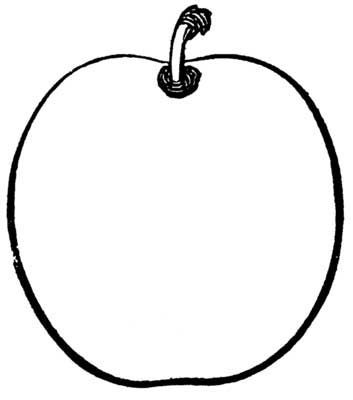
Lawrence's Favorite.
Varieties are numerous, and many of them ought to be forgotten, as is the case with all other fruits. We give a small list, containing all the good qualities of the whole:—
Bleecker's Gage.—A hardy tree and sure bearer. Time, August.

Imperial Gage.—This is an American variety. It is of a lightish-green color, and excellent flavor. Season, July at the South, and September at the North.
Egg.—The above cut represents one of the egg-plums, of excellent quality in all respects. There are many of this name.
Lawrence's Favorite.—This is a fine plum, of the gage family. It was raised from the seed of the green gage; its qualities are seldom surpassed.
Washington.—This is a very good plum for high latitudes. At the South it is too dry.

Green Gage.—With fifteen synonyms. Excellent.
Jefferson.—One of the very best. Time, last of August.
Denniston's Purple, or Red.—Vigorous grower and very productive. Time, August 20.
Madison.—A hardy, productive, and excellent October plum.
The foregoing varieties, with the little black damson-plum, so hardy and productive, and so much esteemed for preserving, will answer all needful purposes. You will find long lists in the fruit-books. Some of them are the above varieties, under different names. Procure four or five of the best you can find in your vicinity, and cultivate them, and you will need no others.
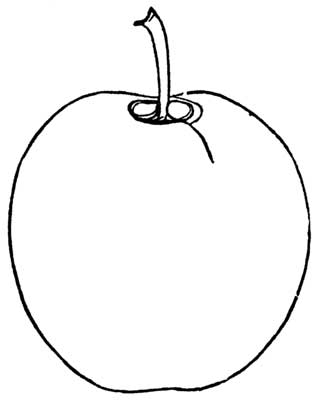
Washington.
POMEGRANATE
This is one of the most delicious and beautiful of all the dessert-fruits. Native in China, and much cultivated in Southern Europe. It will do quite well as far north as the Ohio river. Trained as an espalier, with protection of straw or mats, it will do tolerably well throughout the Middle states. The fruit is about as large as an ordinary apple, and has a tough, orange-colored skin, with a beautiful red cheek. The tree is of low growth. Blossoms are highly ornamental, as is also the fruit, during all the season. It is cultivated as the orange.
There are several varieties: the sweet-fruited, the sub-acid, and the wild or acid-fruited. The first is the best, and the second the one most cultivated in this country; the latter yields a very pleasant acid, making an excellent sirup. Pomegranates should be extensively cultivated at the South, and form an important article of commerce for Northern cities.
POTATO
This is far the most valuable of all esculent roots; supposed to be a native of South America. It is called the Irish potato, because it was grown extensively first in Ireland. It was first planted on the estate of Sir Walter Raleigh in 1602. It was introduced into England in 1694. It has been represented as having been introduced into England from Virginia as early as 1586, but attracted no attention, and for two centuries formed no considerable part of British agriculture. It has become naturalized in all temperate regions, and in many locations in high latitudes. In tropical climates, it flourishes on the mountains, at an elevation sufficient to secure a cool atmosphere. Cool moist regions, as Ireland and the northern parts of the United States, are most favorable for potatoes. In warm climates the potato grows less luxuriantly, yields much less, and is liable to be ruined by a second growth. In the latitude of southern Ohio, a severe drought, while the tubers are small, followed by considerable rain, causes the young potatoes to sprout, and send up fresh shoots, and often make a very luxuriant growth of tops, to the complete ruin of the tubers. This is called second growth. In cooler climates this second growth simply makes prongs on the tubers, thus injuring the appearance and quality, but increasing the crop. The only preventive is watering regularly in a dry time. This can be done advantageously in a garden, and on a small scale. In field culture, when second growth occurs, dig your potatoes at once, if they are large enough to be of much use. If not they will all be lost.

